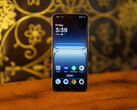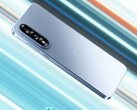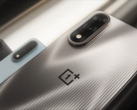OnePlus Nord 5 verdict
The OnePlus Nord 5 is a beautifully made phone at an upper mid-range price, but it feels significantly more premium. The design is more straightforward than its predecessor, and the high-quality metal chassis is gone. Despite this, the Nord 5's plastic case also makes a good impression.
The phone isn't truly waterproof and could be a bit lighter, but you do get super-fast Wi-Fi, a bright AMOLED display, good camera features, as well as plenty of power.
Unfortunately, the manufacturer has decided to ditch the iconic notification slider, instead opting for the more or less freely assignable Plus key. The battery is also smaller than the Nord 4, at least in the European model. This means the OnePlus Nord 5 doesn't quite achieve the battery life of some of its competitors.
You also have to make compromises in terms of storage; it's a bit slower than its predecessor, but overall system performance is significantly higher thanks to the lightning-fast SoC.
If you find high-end phones with four-digit prices far too expensive, the OnePlus Nord 5 offers a premium feel and a well-made smartphone for around $450.
However, it has a strong competitor in its own family: its direct predecessor, the OnePlus Nord 4.
Pros
Cons
Price and availability
The small storage version of the OnePlus Nord 5 can be had for £399 directly from the manufacturer as well as amazon.co.uk. At the time of reviewing, the device is unavailable in the US.
Table of Contents
- OnePlus Nord 5 verdict
- Specifications
- Case – Understated, but not waterproof
- Features – Storage downgrade
- Software – Including long updates
- Communication and GNSS – The Nord 5 comes with WiFi 6
- Telephone functions and voice quality – Sounds good
- Cameras – Innovations only on the front
- Accessories and warranty – 24-month peace of mind
- Input devices and operation – Now with a Plus key
- Display – A bigger and brighter AMOLED
- Performance – Full power
- Games – Even at 90fps
- Emissions – Hot stuff
- Battery life – The battery's been on a diet
- Notebookcheckoverall rating
- Possible alternatives compared
The OnePlus Nord series continues OnePlus' original philosophy of offering truly affordable phones that can compete with significantly more expensive handsets in terms of features and design.
While OnePlus flagships now sell for over $1,000, the OnePlus Nord 5 remains under $500 and still boasts a bright AMOLED screen, decent cameras, and a fast SoC.
Let's take a closer look at how the new premium mid-range device performs.
Specifications
Case – Understated, but not waterproof
The OnePlus Nord 5's matte rear is available in three colors: light blue, white with a marble effect, and our review device's dark gray. The Nord 4's metal case is a thing of the past, and instead, we're now dealing with a premium plastic case.
However, at 211 grams, the OnePlus Nord 5 isn't any lighter and weighs significantly more than its predecessor or many comparable phones.
It's impressively sturdy, but a creaking sound is audible when pressure is applied.
The phone has an IP65 rating, making it dustproof and resistant to strong water jets. However, it shouldn't be submerged in water.
Features – Storage downgrade
256 GB of UFS 3.1 flash is standard in this price range, but the one found here is actually a downgrade from its predecessor, which had faster UFS 4.0 storage. OnePlus has also cut corners on the RAM, offering only 8 GB instead of the 12 GB housed inside the previous generation's OnePlus Nord 4.
The second version is available with 512 GB and 12 GB of RAM, meaning the RAM in this model has also been reduced compared to its predecessor.
There's still only one USB 2.0 port, so the phone can't output wired display signals.
If desired, the built-in infrared blaster lets you turn the smartphone into a TV remote control, and NFC for wireless payments is also on board.
OnePlus has never been a fan of microSD slots, and the Nord 5 is no different. There's no eSIM support, but you can insert two nano-SIMs.
Software – Including long updates
The OnePlus smartphone is equipped with the company's proprietary OxygenOS interface, which is based on Android 15.
The manufacturer promises four software updates, up to Android 19, as well as security patches until 2031. Patches are currently released approximately every two months.
The interface is clearly structured, looks stylish, and is also intuitive to use.
You'll have to get used to some pre-installed apps, but these can be easily uninstalled.
Sustainability
The OnePlus Nord 5's packaging is plastic-free. The EU's EPREL database gives it a second-best rating of B for repairability. The device is said to survive 90 drops without failure.
OnePlus offers spare parts via its online store (although currently only for older devices), and repair instructions are also available.
Communication and GNSS – The Nord 5 comes with WiFi 6
The OnePlus Nord 5 supports Wi-Fi 6 as the fastest Wi-Fi standard. In our tests with the Asus ROG Rapture AXE11000 reference router, the smartphone achieved higher data speeds than its predecessor and even outperformed most comparable phones.
Unfortunately, the rarely used 6 GHz band isn't accessible. Despite that, data speeds remain quite stable, allowing for good use of a gigabit internet connection.
Many 4G and 5G frequencies are available for mobile communications. This means that the device can easily be used while out and about to access the mobile internet. We tested the signal stability on a walk and also took two high-end phones with us on the same network for comparison purposes. The OnePlus Nord 5 performed well here, only faltering in one spot between tall buildings, where the comparison devices still offered a bit of reception.
| Networking | |
| OnePlus Nord 5 | |
| iperf3 transmit AXE11000 6GHz | |
| iperf3 receive AXE11000 6GHz | |
| OnePlus Nord 4 | |
| iperf3 transmit AXE11000 | |
| iperf3 receive AXE11000 | |
| Google Pixel 9a | |
| iperf3 receive AXE11000 | |
| iperf3 receive AXE11000 | |
| iperf3 transmit AXE11000 6GHz | |
| iperf3 receive AXE11000 6GHz | |
| Honor 400 | |
| iperf3 transmit AXE11000 | |
| iperf3 receive AXE11000 | |
| Samsung Galaxy A56 5G | |
| iperf3 transmit AXE11000 | |
| iperf3 receive AXE11000 | |
| Average 802.11 a/b/g/n/ac/ax | |
| iperf3 transmit AXE11000 | |
| iperf3 receive AXE11000 | |
| iperf3 transmit AXE11000 6GHz | |
| iperf3 receive AXE11000 6GHz | |
| Average of class Smartphone | |
| iperf3 transmit AXE11000 | |
| iperf3 receive AXE11000 | |
| iperf3 transmit AXE11000 6GHz | |
| iperf3 receive AXE11000 6GHz | |
As soon as you step outside, you're quickly located by the satellites to within 3 meters. All major systems are available, although SBAS for even higher accuracy isn't supported.
But since we want to know for sure, we set off on a bike ride for a practical test. We used the Garmin Venu 2 as a comparison device, which usually provides very accurate positioning.
The OnePlus Nord 5 actually exhibited problems here. For example, the tracking failed completely for a good stretch after the turn, forcing the phone to draw a straight line between two distant points - a problem the Garmin smartwatch doesn't exhibit. At first glance, the Nord 5 handled the ride through the old town with its narrow streets quite well, but it often placed us about one meter off the actual route.
If you don't require absolute accuracy, you can use the OnePlus Nord 5 for navigation. However, if you have higher demands, you won't be satisfied with the somewhat inaccurate positioning.
Telephone functions and voice quality – Sounds good
OnePlus relies on Google's phone app, which was recently redesigned and is still quite intuitive to use.
The call quality is good, although the person on the end of the line occasionally sounded a bit distant. We're easy to hear via the speaker and hands-free microphone, and we were able to hear our caller very clearly.
Cameras – Innovations only on the front
On the rear, nothing has changed in terms of cameras compared to the predecessor, the OnePlus Nord 4. There's also a Sony 50-megapixel main camera and an 8-megapixel camera for wide-angle and macro shots.
The main camera produces beautiful images in good light with plenty of detail and vibrant colors. Some details are lost in ambient shots, but the images still appear very high-quality. In low light, sharpness levels remain high, although dark areas are not as well illuminated.
Videos can be recorded in 4K resolution at 60fps. The image quality and good sharpness are impressive, and the autofocus also responds quickly and mostly imperceptibly.
The wide-angle camera takes passable shots, although some details appear very blurry.
On the front, there's a new 50-megapixel camera for selfies, which actually produces excellent shots. These impress with sharp details and decent brightening in darker areas.
Image comparison
Choose a scene and navigate within the first image. One click changes the position on touchscreens. One click on the zoomed-in image opens the original in a new window. The first image shows the scaled photograph of the test device.
Main camera plantMain camera environmentMain camera low lightWide-angle camera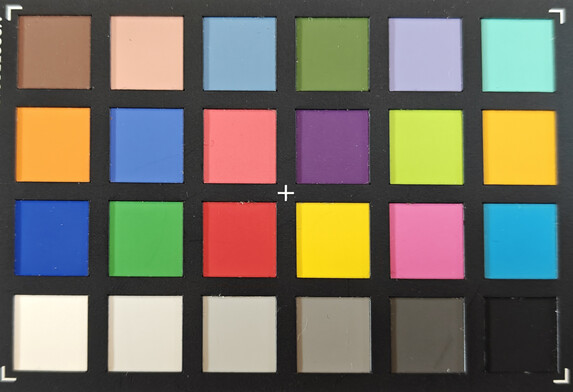
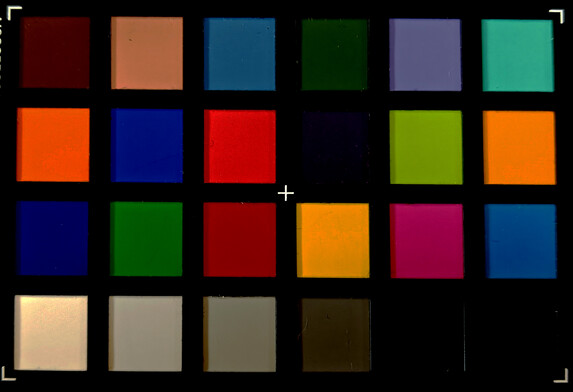
Accessories and warranty – 24-month peace of mind
A charger isn't included (at least in Europe), meaning you'll have to make do with a USB cable and the SIM tool.
OnePlus offers a 24-month warranty on its smartphones bought within the EU.
Input devices and operation – Now with a Plus key
The screen offers a refresh rate of up to 144 Hz, allowing touchscreen inputs to be processed swiftly. The system feels very responsive and fluid.
OnePlus has removed the physical notification slider and replaced it with a Plus key, which, in addition to the sound and vibration settings, can also be assigned different functions.
The fingerprint sensor is integrated into the touchscreen and is located quite low, even making it easy to reach for people with small hands. Unlocking is both reliable and very fast.
2D facial recognition via the front camera is possible. However, this method is somewhat less secure and is therefore not accepted by all apps as a biometric login method.
Display – A bigger and brighter AMOLED
The AMOLED display has grown by 0.1 inches compared to its predecessor. With a resolution of 2,800 x 1,272, it offers slightly more pixels and thus a similar pixel density.
The measured values are also similar to the display found in the Nord 4. We measured up to 1,162 cd/m² with a solid white screen and over 1,300 cd/m² on smaller areas. This means nothing stands in the way of enjoying HDR content or spending extended time outdoors.
| |||||||||||||||||||||||||
Brightness Distribution: 95 %
Center on Battery: 1162 cd/m²
Contrast: ∞:1 (Black: 0 cd/m²)
ΔE ColorChecker Calman: 3.24 | ∀{0.5-29.43 Ø4.78}
ΔE Greyscale Calman: 1.7 | ∀{0.09-98 Ø5}
100% sRGB (Calman 2D)
Gamma: 2.212
CCT: 6788 K
| OnePlus Nord 5 AMOLED, 2800x1272, 6.8" | OnePlus Nord 4 AMOLED, 2772x1240, 6.7" | Google Pixel 9a pOLED, 2424x1080, 6.3" | Honor 400 OLED, 2736x1264, 6.6" | Samsung Galaxy A56 5G Super AMOLED, 2340x1080, 6.7" | |
|---|---|---|---|---|---|
| Screen | 8% | 33% | 45% | 11% | |
| Brightness middle (cd/m²) | 1162 | 1102 -5% | 1978 70% | 1605 38% | 1184 2% |
| Brightness (cd/m²) | 1130 | 1102 -2% | 1775 57% | 1607 42% | 1179 4% |
| Brightness Distribution (%) | 95 | 94 -1% | 76 -20% | 96 1% | 99 4% |
| Black Level * (cd/m²) | |||||
| Colorchecker dE 2000 * | 3.24 | 1.43 56% | 1.1 66% | 0.7 78% | 1.7 48% |
| Colorchecker dE 2000 max. * | 6.54 | 4.04 38% | 3 54% | 1.5 77% | 3.2 51% |
| Greyscale dE 2000 * | 1.7 | 2.4 -41% | 2.2 -29% | 1.1 35% | 2.4 -41% |
| Gamma | 2.212 99% | 2.213 99% | 2.22 99% | 2.24 98% | 2.12 104% |
| CCT | 6788 96% | 6385 102% | 6622 98% | 6422 101% | 6544 99% |
* ... smaller is better
Screen Flickering / PWM (Pulse-Width Modulation)
| Screen flickering / PWM detected | 119 Hz Amplitude: 9 % | ||
The display backlight flickers at 119 Hz (worst case, e.g., utilizing PWM) . The frequency of 119 Hz is very low, so the flickering may cause eyestrain and headaches after extended use. In comparison: 53 % of all tested devices do not use PWM to dim the display. If PWM was detected, an average of 8108 (minimum: 5 - maximum: 343500) Hz was measured. | |||
A series of measurements with a fixed zoom level and different brightness settings (The amplitude curve at minimum brightness appears flat, but this is due to the scaling. The enlarged version of the amplitude at minimum brightness can be seen in the info box.)
We measured PWM flickering at low brightness, but since this corresponds to the screen's refresh rate, it might not be that bothersome. With flickering screen issues often being device-dependent, we still recommend testing the screen before purchasing the OnePlus Nord 5.
In our tests with the spectrophotometer and the CalMAN software, we barely registered any deviations in the grayscale, but a slightly exaggerated color representation. Those who value absolutely faithful color reproduction will probably need to choose a different phone.
Display Response Times
| ↔ Response Time Black to White | ||
|---|---|---|
| 17.7 ms ... rise ↗ and fall ↘ combined | ↗ 0.7 ms rise | |
| ↘ 17 ms fall | ||
| The screen shows good response rates in our tests, but may be too slow for competitive gamers. In comparison, all tested devices range from 0.1 (minimum) to 240 (maximum) ms. » 39 % of all devices are better. This means that the measured response time is better than the average of all tested devices (20.2 ms). | ||
| ↔ Response Time 50% Grey to 80% Grey | ||
| 1.4 ms ... rise ↗ and fall ↘ combined | ↗ 0.7 ms rise | |
| ↘ 0.7 ms fall | ||
| The screen shows very fast response rates in our tests and should be very well suited for fast-paced gaming. In comparison, all tested devices range from 0.165 (minimum) to 636 (maximum) ms. » 5 % of all devices are better. This means that the measured response time is better than the average of all tested devices (31.6 ms). | ||
Performance – Full power
The Qualcomm Snapdragon 8s Gen 3 is used as the SoC in the Nord 5. It provides a 20-30% performance boost in raw processor power compared to its predecessor and also holds its own against similarly priced phones.
In everyday situations, you can also perform more demanding tasks on the Nord 5 or use the split screen for multiple apps simultaneously without any stuttering.
| UL Procyon AI Inference for Android - Overall Score NNAPI | |
| Google Pixel 9a | |
| Average of class Smartphone (3769 - 81594, n=135, last 2 years) | |
| Average Qualcomm Snapdragon 8s Gen 3 (13576 - 15572, n=7) | |
| OnePlus Nord 5 | |
| Samsung Galaxy A56 5G | |
| OnePlus Nord 4 | |
| Geekbench AI | |
| Single Precision NPU 1.5 | |
| Average of class Smartphone (80 - 5210, n=59, last 2 years) | |
| OnePlus Nord 5 | |
| Average Qualcomm Snapdragon 8s Gen 3 (n=1) | |
| Half Precision NPU 1.5 | |
| Average of class Smartphone (80 - 36297, n=59, last 2 years) | |
| OnePlus Nord 5 | |
| Average Qualcomm Snapdragon 8s Gen 3 (n=1) | |
| Quantized NPU 1.5 | |
| Average of class Smartphone (133 - 49889, n=59, last 2 years) | |
| OnePlus Nord 5 | |
| Average Qualcomm Snapdragon 8s Gen 3 (n=1) | |
With its Adreno 735, the OnePlus Nord 5 also features a powerful graphics chip. However, the differences compared to the Nord 4 have less to do with performance but are more a result of supporting more modern APIs, allowing, for example, 3DMark Solar Bay to run with ray tracing.
GFXBench (DX / GLBenchmark) 2.7: T-Rex Onscreen | 1920x1080 T-Rex Offscreen
GFXBench 3.0: on screen Manhattan Onscreen OGL | 1920x1080 1080p Manhattan Offscreen
GFXBench 3.1: on screen Manhattan ES 3.1 Onscreen | 1920x1080 Manhattan ES 3.1 Offscreen
GFXBench: on screen Car Chase Onscreen | 1920x1080 Car Chase Offscreen | on screen Aztec Ruins High Tier Onscreen | 2560x1440 Aztec Ruins High Tier Offscreen | on screen Aztec Ruins Normal Tier Onscreen | 1920x1080 Aztec Ruins Normal Tier Offscreen | 3840x2160 4K Aztec Ruins High Tier Offscreen
| 3DMark / Wild Life Extreme Unlimited | |
| OnePlus Nord 5 | |
| OnePlus Nord 4 | |
| Google Pixel 9a | |
| Honor 400 | |
| Samsung Galaxy A56 5G | |
| 3DMark / Wild Life Extreme | |
| OnePlus Nord 5 | |
| OnePlus Nord 4 | |
| Google Pixel 9a | |
| Honor 400 | |
| Samsung Galaxy A56 5G | |
| 3DMark / Wild Life Unlimited Score | |
| OnePlus Nord 5 | |
| OnePlus Nord 4 | |
| Google Pixel 9a | |
| Honor 400 | |
| Samsung Galaxy A56 5G | |
| 3DMark / Solar Bay Score | |
| OnePlus Nord 5 | |
| 3DMark / Solar Bay Unlimited Score | |
| OnePlus Nord 5 | |
| 3DMark / Steel Nomad Light Unlimited Score | |
| OnePlus Nord 5 | |
| Google Pixel 9a | |
| OnePlus Nord 4 | |
| Samsung Galaxy A56 5G | |
| Honor 400 | |
| 3DMark / Steel Nomad Light Score | |
| Google Pixel 9a | |
| OnePlus Nord 5 | |
| OnePlus Nord 4 | |
| Samsung Galaxy A56 5G | |
| Honor 400 | |
| GFXBench (DX / GLBenchmark) 2.7 / T-Rex Onscreen | |
| Samsung Galaxy A56 5G | |
| OnePlus Nord 5 | |
| OnePlus Nord 4 | |
| Google Pixel 9a | |
| GFXBench (DX / GLBenchmark) 2.7 / T-Rex Offscreen | |
| OnePlus Nord 4 | |
| OnePlus Nord 5 | |
| Google Pixel 9a | |
| Samsung Galaxy A56 5G | |
| GFXBench 3.0 / Manhattan Onscreen OGL | |
| Samsung Galaxy A56 5G | |
| OnePlus Nord 5 | |
| OnePlus Nord 4 | |
| Google Pixel 9a | |
| GFXBench 3.0 / 1080p Manhattan Offscreen | |
| OnePlus Nord 4 | |
| Google Pixel 9a | |
| OnePlus Nord 5 | |
| Samsung Galaxy A56 5G | |
| GFXBench 3.1 / Manhattan ES 3.1 Onscreen | |
| OnePlus Nord 5 | |
| Samsung Galaxy A56 5G | |
| OnePlus Nord 4 | |
| Google Pixel 9a | |
| GFXBench 3.1 / Manhattan ES 3.1 Offscreen | |
| OnePlus Nord 5 | |
| OnePlus Nord 4 | |
| Google Pixel 9a | |
| Samsung Galaxy A56 5G | |
| GFXBench / Car Chase Onscreen | |
| OnePlus Nord 5 | |
| OnePlus Nord 4 | |
| Google Pixel 9a | |
| Samsung Galaxy A56 5G | |
| GFXBench / Car Chase Offscreen | |
| OnePlus Nord 4 | |
| OnePlus Nord 5 | |
| Google Pixel 9a | |
| Samsung Galaxy A56 5G | |
| GFXBench / Aztec Ruins High Tier Onscreen | |
| OnePlus Nord 5 | |
| OnePlus Nord 4 | |
| Google Pixel 9a | |
| Samsung Galaxy A56 5G | |
| Honor 400 | |
| GFXBench / Aztec Ruins High Tier Offscreen | |
| OnePlus Nord 4 | |
| OnePlus Nord 5 | |
| Google Pixel 9a | |
| Honor 400 | |
| Samsung Galaxy A56 5G | |
| GFXBench / Aztec Ruins Normal Tier Onscreen | |
| OnePlus Nord 5 | |
| OnePlus Nord 4 | |
| Google Pixel 9a | |
| Samsung Galaxy A56 5G | |
| Honor 400 | |
| GFXBench / Aztec Ruins Normal Tier Offscreen | |
| OnePlus Nord 4 | |
| OnePlus Nord 5 | |
| Google Pixel 9a | |
| Honor 400 | |
| Samsung Galaxy A56 5G | |
| GFXBench / 4K Aztec Ruins High Tier Offscreen | |
| OnePlus Nord 4 | |
| OnePlus Nord 5 | |
| Google Pixel 9a | |
| Samsung Galaxy A56 5G | |
| Honor 400 | |
The Nord 5's speed is impressive when surfing the internet, with pages loading very quickly, and scrolling is smooth.
| Jetstream 2 - 2.0 Total Score | |
| OnePlus Nord 5 (Chrome 139) | |
| Average Qualcomm Snapdragon 8s Gen 3 (59.7 - 235, n=8) | |
| Average of class Smartphone (23.8 - 387, n=149, last 2 years) | |
| Samsung Galaxy A56 5G (Chrome 134) | |
| OnePlus Nord 4 (Chrome 127) | |
| Honor 400 (Chrome 137) | |
| Google Pixel 9a (Chrome 137) | |
| Speedometer 2.0 - Result 2.0 | |
| OnePlus Nord 5 (Chrome 139) | |
| Google Pixel 9a (Chrome 137) | |
| Average of class Smartphone (15.2 - 643, n=122, last 2 years) | |
| Average Qualcomm Snapdragon 8s Gen 3 (65.9 - 256, n=7) | |
| Samsung Galaxy A56 5G (Chrome 134) | |
| OnePlus Nord 4 (Chrome 127) | |
| Speedometer 3 - Score 3.0 | |
| OnePlus Nord 5 (Chrome 139) | |
| Google Pixel 9a (Chrome 137) | |
| Average of class Smartphone (1.03 - 42.8, n=124, last 2 years) | |
| Samsung Galaxy A56 5G (Chrome 134) | |
| OnePlus Nord 4 (Chrome 127) | |
| Average Qualcomm Snapdragon 8s Gen 3 (3.54 - 15, n=8) | |
| WebXPRT 4 - Overall | |
| Average of class Smartphone (27 - 306, n=145, last 2 years) | |
| Average Qualcomm Snapdragon 8s Gen 3 (61 - 185, n=8) | |
| OnePlus Nord 5 (Chrome 139) | |
| Samsung Galaxy A56 5G (Chrome 134) | |
| OnePlus Nord 4 (Chrome 127) | |
| Google Pixel 9a (Chrome 137) | |
| Octane V2 - Total Score | |
| OnePlus Nord 5 (Chrome 139) | |
| OnePlus Nord 4 (Chrome 127) | |
| Google Pixel 9a (Chrome 137) | |
| Samsung Galaxy A56 5G (Chrome 134) | |
| Average Qualcomm Snapdragon 8s Gen 3 (28536 - 66369, n=8) | |
| Average of class Smartphone (2228 - 121337, n=197, last 2 years) | |
| Honor 400 (Chrome 137) | |
| Mozilla Kraken 1.1 - Total | |
| OnePlus Nord 4 (Chrome 127) | |
| Average of class Smartphone (257 - 28190, n=153, last 2 years) | |
| Google Pixel 9a (Chrome 137) | |
| Average Qualcomm Snapdragon 8s Gen 3 (603 - 1456, n=8) | |
| Samsung Galaxy A56 5G (Chrome 134) | |
| OnePlus Nord 5 (Chrome 139) | |
* ... smaller is better
OnePlus has taken a backwards step when it comes to storage: The OnePlus Nord 5 only comes with UFS 3.1 flash, while its predecessor featured the faster UFS 4.0.
This is very noticeable in maximum transfer speeds and large files, but the difference is less evident when accessing the storage randomly.
Nevertheless, the OnePlus Nord 5 is also equipped with fast storage, and loading times aren't too long.
| OnePlus Nord 5 | OnePlus Nord 4 | Google Pixel 9a | Honor 400 | Samsung Galaxy A56 5G | Average 256 GB UFS 3.1 Flash | Average of class Smartphone | |
|---|---|---|---|---|---|---|---|
| AndroBench 3-5 | 37% | -18% | 19% | -27% | -2% | 15% | |
| Sequential Read 256KB (MB/s) | 1894 | 3592.8 90% | 1688.82 -11% | 1962.46 4% | 1634.8 -14% | 1757 ? -7% | 2217 ? 17% |
| Sequential Write 256KB (MB/s) | 1852 | 2898.2 56% | 853.5 -54% | 1812.5 -2% | 999.95 -46% | 1204 ? -35% | 1840 ? -1% |
| Random Read 4KB (MB/s) | 250 | 250.4 0% | 241.03 -4% | 333.34 33% | 207.01 -17% | 287 ? 15% | 294 ? 18% |
| Random Write 4KB (MB/s) | 268 | 276.2 3% | 261.8 -2% | 377.57 41% | 184.08 -31% | 318 ? 19% | 334 ? 25% |
Games – Even at 90fps
Genshin Impact and PUBG Mobile are the two games we used to find out how well the OnePlus Nord 5 performs for gaming. We tested the frame rates using the GameBench software.
In Genshin Impact, we achieved a fairly stable 60fps even at high details, with only very rare drops to 50fps. In PUBG, we even managed around 90fps if we reduced the details. At UltraHD, it was only 40fps, but the frame rates were still very consistent.
We also liked the reliable operation via the touchscreen and the position sensor.
Emissions – Hot stuff
Temperature
The case can definitely heat up to over 51°C after prolonged use, and could even get warmer, especially on hot days. During normal use, temperatures are significantly lower.
In the 3DMark stress tests, we observed that performance can drop by up to 19% during prolonged use. Overall, however, the performance remained high.
(-) The maximum temperature on the upper side is 51.3 °C / 124 F, compared to the average of 35.2 °C / 95 F, ranging from 21.9 to 247 °C for the class Smartphone.
(-) The bottom heats up to a maximum of 50.7 °C / 123 F, compared to the average of 34 °C / 93 F
(±) In idle usage, the average temperature for the upper side is 32 °C / 90 F, compared to the device average of 32.9 °C / 91 F.
3DMark Steel Nomad Stress Test
| 3DMark | |
| Wild Life Stress Test Stability | |
| Honor 400 | |
| Samsung Galaxy A56 5G | |
| OnePlus Nord 5 | |
| OnePlus Nord 4 | |
| Google Pixel 9a | |
| Wild Life Extreme Stress Test | |
| Samsung Galaxy A56 5G | |
| OnePlus Nord 5 | |
| Google Pixel 9a | |
| OnePlus Nord 4 | |
| Solar Bay Stress Test Stability | |
| OnePlus Nord 5 | |
| Steel Nomad Light Stress Test Stability | |
| Honor 400 | |
| Samsung Galaxy A56 5G | |
| OnePlus Nord 5 | |
| Google Pixel 9a | |
| OnePlus Nord 4 | |
Speakers
The OnePlus Nord 5 relies on a full-size speaker on the bottom edge and the earpiece for amplification. This provides a slight stereo effect when holding the phone in landscape mode.
The maximum volume is impressive, and according to our chart, you can also enjoy well-defined low-mids and a relatively linear frequency response.
But what does this mean in practice? The sound is indeed warm and full, and the speakers aren't overloaded, even at full volume.
If you prefer to connect external speakers or headphones, you can do so via USB or Bluetooth. The most important audio codecs for wireless sound are available, but more exotic variants such as Opus are missing.
OnePlus Nord 5 audio analysis
(+) | speakers can play relatively loud (87 dB)
Bass 100 - 315 Hz
(-) | nearly no bass - on average 20% lower than median
(±) | linearity of bass is average (9.7% delta to prev. frequency)
Mids 400 - 2000 Hz
(+) | balanced mids - only 4.9% away from median
(+) | mids are linear (3.7% delta to prev. frequency)
Highs 2 - 16 kHz
(±) | higher highs - on average 5.3% higher than median
(±) | linearity of highs is average (8.1% delta to prev. frequency)
Overall 100 - 16.000 Hz
(±) | linearity of overall sound is average (16.7% difference to median)
Compared to same class
» 8% of all tested devices in this class were better, 6% similar, 86% worse
» The best had a delta of 11%, average was 35%, worst was 134%
Compared to all devices tested
» 28% of all tested devices were better, 7% similar, 65% worse
» The best had a delta of 4%, average was 24%, worst was 134%
Samsung Galaxy A56 5G audio analysis
(+) | speakers can play relatively loud (87.7 dB)
Bass 100 - 315 Hz
(-) | nearly no bass - on average 22.3% lower than median
(±) | linearity of bass is average (8.1% delta to prev. frequency)
Mids 400 - 2000 Hz
(±) | higher mids - on average 5.1% higher than median
(+) | mids are linear (5.8% delta to prev. frequency)
Highs 2 - 16 kHz
(±) | higher highs - on average 8% higher than median
(+) | highs are linear (5.5% delta to prev. frequency)
Overall 100 - 16.000 Hz
(±) | linearity of overall sound is average (20.5% difference to median)
Compared to same class
» 35% of all tested devices in this class were better, 9% similar, 56% worse
» The best had a delta of 11%, average was 35%, worst was 134%
Compared to all devices tested
» 53% of all tested devices were better, 8% similar, 39% worse
» The best had a delta of 4%, average was 24%, worst was 134%
Battery life – The battery's been on a diet
Power consumption
When it comes to power consumption, the OnePlus Nord 5 is somewhat more demanding than its predecessor, but it offers significantly more power at peak times. Although its peak power consumption is also relatively low compared to other smartphones, the Nord 5 does require more power when idle.
The battery can only be charged via cable and then at a maximum of 80 watts. A full charging cycle takes about 40 minutes, slightly longer than its predecessor, despite the smaller battery. The battery can even be disconnected from the power supply if necessary, preventing it from overheating, for example, when gaming on the mains.
| Off / Standby | |
| Idle | |
| Load |
|
Key:
min: | |
| OnePlus Nord 5 5200 mAh | OnePlus Nord 4 5500 mAh | Google Pixel 9a 5100 mAh | Honor 400 5300 mAh | Samsung Galaxy A56 5G 5000 mAh | Average Qualcomm Snapdragon 8s Gen 3 | Average of class Smartphone | |
|---|---|---|---|---|---|---|---|
| Power Consumption | 16% | -17% | 38% | 3% | -17% | 10% | |
| Idle Minimum * (Watt) | 1 | 0.9 10% | 0.71 29% | 0.46 54% | 0.72 28% | 1.234 ? -23% | 0.842 ? 16% |
| Idle Average * (Watt) | 1.5 | 1.1 27% | 2.36 -57% | 1.12 25% | 1.45 3% | 2.09 ? -39% | 1.439 ? 4% |
| Idle Maximum * (Watt) | 2.1 | 1.5 29% | 2.41 -15% | 1.36 35% | 1.49 29% | 2.27 ? -8% | 1.624 ? 23% |
| Load Average * (Watt) | 7.5 | 6.7 11% | 8.24 -10% | 9.68 -29% | 8.3 ? -11% | 7.03 ? 6% | |
| Load Maximum * (Watt) | 11.6 | 11.3 3% | 15.36 -32% | 13.39 -15% | 11.9 ? -3% | 11.3 ? 3% |
* ... smaller is better
Power consumption: Geekbench (150 cd/m²)
Power consumption: GFXbench (150 cd/m²)
Battery runtimes
Compared to its predecessor, the battery capacity has been reduced to 5,200 mAh. However, this is only available in the European version of the OnePlus Nord 5. In countries such as India, a 6,800 mAh battery is used. Why this is the case is currently unclear, and it's a phenomenon among several (primarily Chinese) manufacturers, none of whom have made any clear statements as to why.
The smaller battery is noticeable in some areas, but in some areas, the OnePlus Nord 2 still outperforms its predecessor with its 5,500 mAh battery. For example, it achieved a runtime of 17 hours and 14 minutes in the Wi-Fi test, which should easily be sufficient for a day of use.
| OnePlus Nord 5 5200 mAh | OnePlus Nord 4 5500 mAh | Google Pixel 9a 5100 mAh | Honor 400 5300 mAh | Samsung Galaxy A56 5G 5000 mAh | |
|---|---|---|---|---|---|
| Battery runtime | 14% | 27% | 16% | 41% | |
| Reader / Idle (h) | 35.4 | 34.6 -2% | 44.8 27% | 52.9 49% | |
| H.264 (h) | 19 | 23.8 25% | 31.8 67% | 41.8 120% | |
| WiFi v1.3 (h) | 17.2 | 16.6 -3% | 21.2 23% | 20 16% | 20 16% |
| Load (h) | 4.5 | 6.1 36% | 4 -11% | 3.6 -20% |
Notebookcheckoverall rating

The OnePlus Nord 5 is affordable in the best sense of the word: You simply get a lot for your money.
And with a six-year update promise, you're protected even if you use the device for a longer period of time.
However, it might still be worth taking a look at its predecessor, the OnePlus Nord 4, due to some downgrades.
OnePlus Nord 5
- 09/11/2025 v8
Florian Schmitt
Possible alternatives compared
Image | Model / Review | Price | Weight | Drive | Display |
|---|---|---|---|---|---|
| OnePlus Nord 5 Qualcomm Snapdragon 8s Gen 3 ⎘ Qualcomm Adreno 735 ⎘ 8 GB Memory, 256 GB | Amazon: 1. $6.99 iCsapr [4 Pack Glass Screen ... 2. $6.39 Anoowkoa 2 Pack for OnePlus ... 3. $5.99 Supershieldz (2 Pack) Design... List Price: 449€ | 211 g | 256 GB UFS 3.1 Flash | 6.83" 2800x1272 450 PPI AMOLED | |
| OnePlus Nord 4 Qualcomm Snapdragon 7+ Gen 3 ⎘ Qualcomm Adreno 732 ⎘ 16 GB Memory, 512 GB | Amazon: 1. $11.99 Ibywind for OnePlus Nord 4 5... 2. $7.99 Supershieldz (3 Pack) Design... 3. $6.98 LXEEOLX [2 Pack Hydrogel Scr... List Price: 549€ | 199.5 g | 512 GB UFS 4.0 Flash | 6.74" 2772x1240 451 PPI AMOLED | |
| Google Pixel 9a Google Tensor G4 ⎘ ARM Mali-G715 MP7 ⎘ 8 GB Memory, 128 GB | Amazon: 1. $399.00 Google Pixel 9a with Gemini ... 2. $5.99 Ferilinso 3 Pack Screen Prot... 3. $7.99 Supershieldz (3 Pack) Design... List Price: 549€ | 185.9 g | 128 GB UFS 3.1 Flash | 6.30" 2424x1080 421 PPI pOLED | |
| Honor 400 Qualcomm Snapdragon 7 Gen 3 ⎘ Qualcomm Adreno 720 ⎘ 8 GB Memory, 512 GB | Amazon: 1. $10.79 Ibywind for Honor 400 5G Scr... 2. $10.79 Ibywind For Honor 400 Pro 5G... 3. $4.99 Mr.Shield Screen Protector c... List Price: 550€ | 184 g | 512 GB UFS 3.1 Flash | 6.55" 2736x1264 460 PPI OLED | |
| Samsung Galaxy A56 5G Samsung Exynos 1580 ⎘ Samsung Xclipse 540 ⎘ 8 GB Memory, 128 GB | Amazon: 1. $362.63 Samsung Galaxy A56 5G 2025 |... 2. $349.99 Samsung Galaxy A56 5G 2025 |... 3. $369.99 SAMSUNG Galaxy A56 5G 2025 w... List Price: 479€ | 198 g | 128 GB UFS 3.1 Flash | 6.70" 2340x1080 385 PPI Super AMOLED |
Transparency
The selection of devices to be reviewed is made by our editorial team. The test sample was freely purchased by the author at his/her own expense. The lender had no influence on this review, nor did the manufacturer receive a copy of this review before publication. There was no obligation to publish this review. As an independent media company, Notebookcheck is not subjected to the authority of manufacturers, retailers or publishers.
This is how Notebookcheck is testing
Every year, Notebookcheck independently reviews hundreds of laptops and smartphones using standardized procedures to ensure that all results are comparable. We have continuously developed our test methods for around 20 years and set industry standards in the process. In our test labs, high-quality measuring equipment is utilized by experienced technicians and editors. These tests involve a multi-stage validation process. Our complex rating system is based on hundreds of well-founded measurements and benchmarks, which maintains objectivity. Further information on our test methods can be found here.





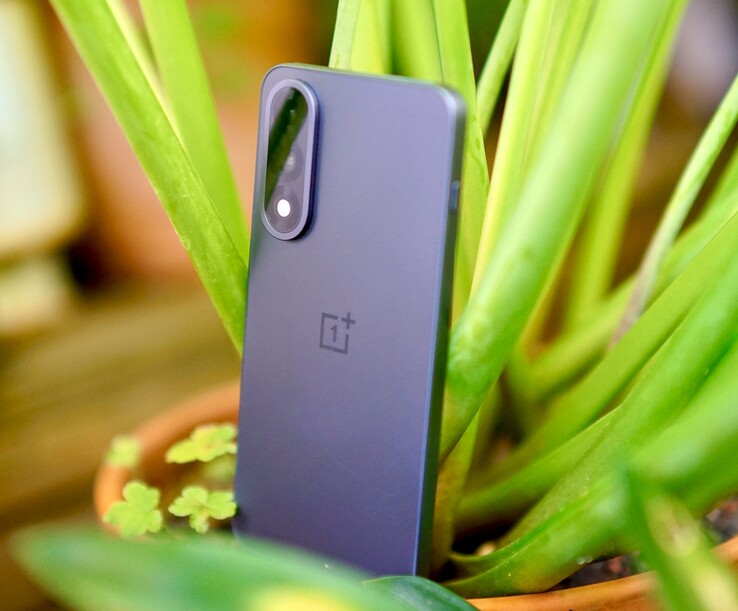









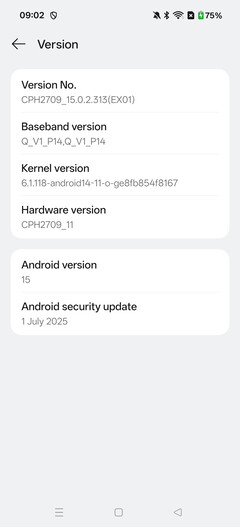




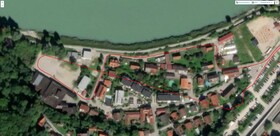
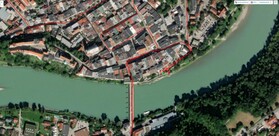







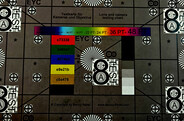



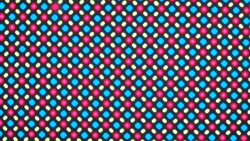
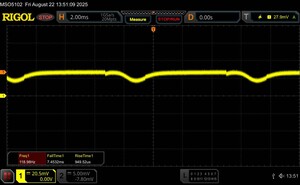






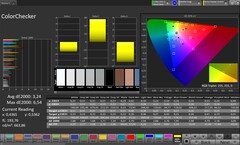
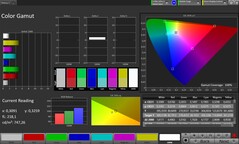
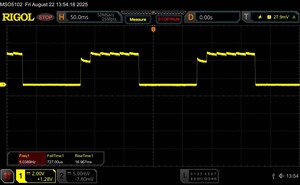
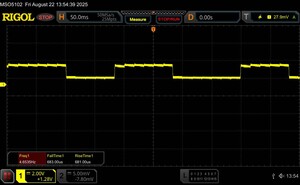
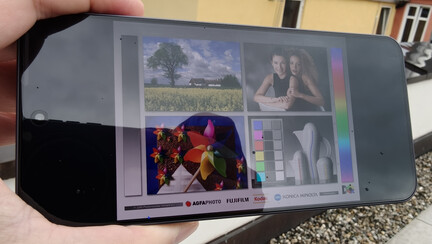



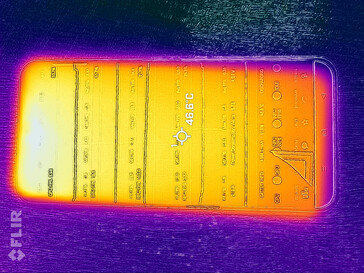
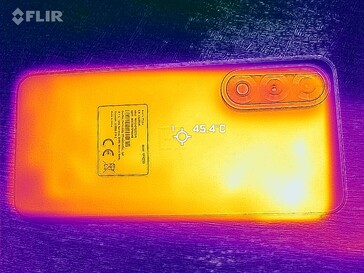

 Total Sustainability Score:
Total Sustainability Score: 



